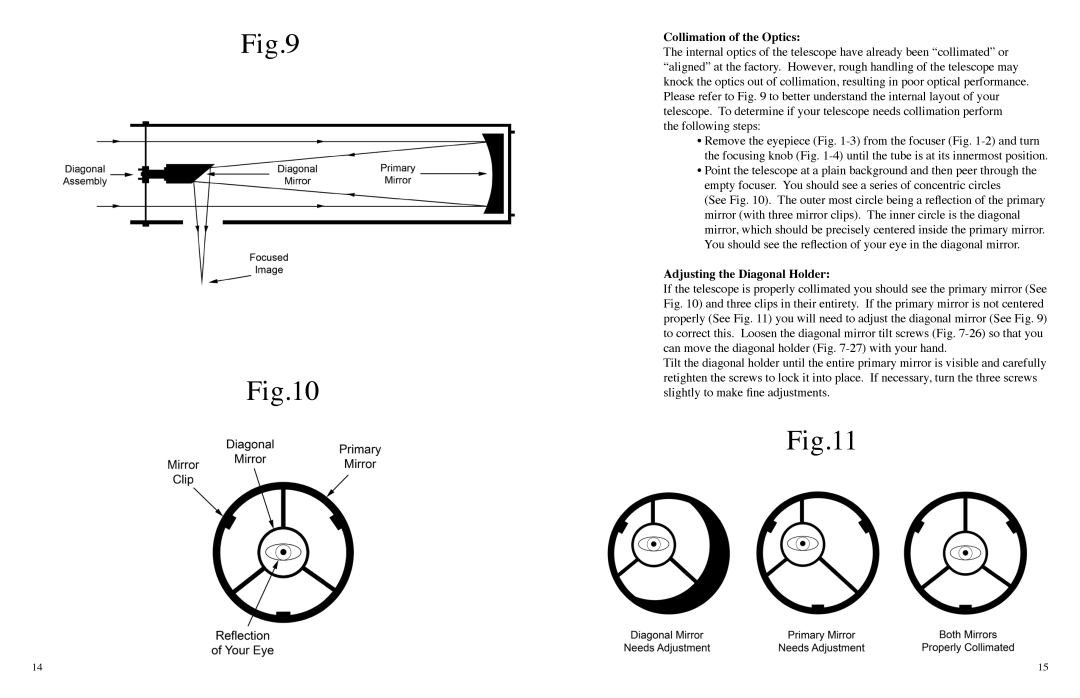
Fig.9
Fig.10
Collimation of the Optics:
The internal optics of the telescope have already been “collimated” or “aligned” at the factory. However, rough handling of the telescope may knock the optics out of collimation, resulting in poor optical performance. Please refer to Fig. 9 to better understand the internal layout of your telescope. To determine if your telescope needs collimation perform the following steps:
• Remove the eyepiece (Fig.
• Point the telescope at a plain background and then peer through the empty focuser. You should see a series of concentric circles
(See Fig. 10). The outer most circle being a reflection of the primary mirror (with three mirror clips). The inner circle is the diagonal mirror, which should be precisely centered inside the primary mirror. You should see the reflection of your eye in the diagonal mirror.
Adjusting the Diagonal Holder:
If the telescope is properly collimated you should see the primary mirror (See Fig. 10) and three clips in their entirety. If the primary mirror is not centered properly (See Fig. 11) you will need to adjust the diagonal mirror (See Fig. 9) to correct this. Loosen the diagonal mirror tilt screws (Fig.
Tilt the diagonal holder until the entire primary mirror is visible and carefully retighten the screws to lock it into place. If necessary, turn the three screws slightly to make fine adjustments.
Fig.11
14 | 15 |
